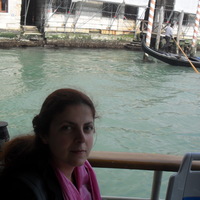Book Chapters by Andrea Bubenik

Giants as primordial ancestors in sixteenth=century art and poetry
Giants and Dwarfs in European art and culture, ca.1350-1750, 2024
Envisioned as primordial ancestors in art, and at the heart of origin stories in epic poetry, gia... more Envisioned as primordial ancestors in art, and at the heart of origin stories in epic poetry, giants were ubiquitous in sixteenth-century Europe. Establishing ancestry with giants was pervasive in the German tradition via the epic Nibelungenlied and the archaeology of Maximilian I. Later, the printmaker Hendrik Goltzius would interpret the colossal figure of Hercules not only in terms of Dutch nationalism, but also of ancestral significance. In England, within the cultural archaeology of Edmund Spenser’s epic poem The Faerie Queene several giants are invoked in order to imagine past ancestry, as much as future hopes of imperialism. This paper takes a comparative approach and analyzes how giants figure prominently in German, English, and Dutch art and epic poetry.
Early Modern Court Culture, ed. Erin Griffey, 2021
This chapter focuses on practices of display at early modern European courts. Just as objects and... more This chapter focuses on practices of display at early modern European courts. Just as objects and artworks were imbued with power dynamics, diplomatic ideals and scholarly ambitions, so too were the strategies of display that were used in making them available for consumption. A consideration of genres of collections – the studiolo, Kunstkammer, picture gallery, sculpture gallery – shows how display was used to organise thinking and confer meaning, to pronounce and shape knowledge and, above all, to articulate a sense of understanding about the self and even the world. Motivated by power, memory, wealth and seduction, no form of display at court was ever neutral, where the question of how to display was of equal significance to what to display.
The Persistence of Melancholia in Arts and Culture, 2019
The polyhedron that features so prominently in Melencolia I occupies a privileged place in the hi... more The polyhedron that features so prominently in Melencolia I occupies a privileged place in the histories of both art and geometry. Art historians and mathematicians have puzzled over the precise shape, debating whether it is a truncated triangular trapezohedron or rhombohedron, and possibly a precursor to the study of quasicrystals. In these histories the polyhedron is elusive, withdrawn, and indifferent—it exudes melancholy. This chapter considers the evolution of the polyhedron as a melancholic object, and later appropriations by artists such as Alberto Giacometti, Anselm Kiefer, and, most recently, Fabien Mérelle.
Perspectives on Wenceslaus Hollar , 2016
Offers a re-evaluation of Hollar and the concept of the 'reproductive printmaker', via Hollar's r... more Offers a re-evaluation of Hollar and the concept of the 'reproductive printmaker', via Hollar's reproduction of Dürer's paintings and prints
Inganno - The Art of Deception: Imitation, Reception, and Deceit in Early Modern Art, 2012
Books by Andrea Bubenik
Reframing Albrecht Dürer: The Appropriation of Art, 1528-1700, 2013
Focusing on the ways his art and persona were valued and criticized by writers, collectors and ar... more Focusing on the ways his art and persona were valued and criticized by writers, collectors and artists subsequent to his death, this book examines the reception of the works of Albrecht Dürer. The author traces carefully how Durer's paintings, prints, drawings and theoretical writings traveled widely, and were appropriated into new contexts and charged with different meanings. The volume includes illustrations of numerous imitative works after Durer.
Edited Books by Andrea Bubenik
Perspectives on Wenceslaus Hollar, 2016
The Persistence of Melancholia, 2019
One way to characterize melancholia is as a survivor. Of the four classical temperaments, only th... more One way to characterize melancholia is as a survivor. Of the four classical temperaments, only the melancholic persists, having long eclipsed the choleric, the phlegmatic, and the sanguine in contemporary culture. Albrecht Durer’s Melencolia I is amongst the most analyzed images in the history of art; to introduce it again can feel reductive. It is an image that is almost numbingly familiar—and five centuries after its creation, it continues to be debated and discussed, enabling new theories and much creative speculation, a lively reception that shows no signs of abating.
Exhibition Catalogues by Andrea Bubenik
eX de Medici: Beautiful Wickedness, 2023
This essay was commissioned by QAGOMA (Queensland Gallery/Gallery of Modern Art) on the occasion ... more This essay was commissioned by QAGOMA (Queensland Gallery/Gallery of Modern Art) on the occasion of the 2023 eX de Medici exhibition 'Beautiful Wickedness'.
Fresh Hell (Ryan Presley exhibition at Gertrude Contemporary), 2023
Ryan Presley’s paintings are critical reflections on the power structures that adversely impact A... more Ryan Presley’s paintings are critical reflections on the power structures that adversely impact Aboriginal people in Australia. This essay was co-commissioned by Gertrude Contemporary (Melbourne) and Adelaide Contemporary Experimental (Adelaide) on the occasion of Ryan Presley's 2023 exhibition 'Fresh Hell'.
Ecstasy: Baroque and Beyond, 2017
Almost four centuries after its creation, Gian Lorenzo Bernini's Ecstasy of Saint Teresa (1652) r... more Almost four centuries after its creation, Gian Lorenzo Bernini's Ecstasy of Saint Teresa (1652) remains the supreme emblem of religious visionary experience and the Baroque sensibility in art. Understanding ecstasy to encompass states of exaltation beyond the sensuous suffering of Bernini's sculpture, this exhibition brings together older depictions of ecstasy with more recent works focused on the transcendence of normal consciousness, including trances, moments of expanded awareness, and visionary insight. From representations of saints and mystics to dreamscapes and images of bacchanalian revels, this exhibition explores how Baroque style - characterised by exaggeration, high drama, extravagance, frenzy, and excess - continues to inform contemporary art.

Five Centuries of Melancholia, 2014
The year 2014 marks the 500th anniversary of Albrecht Dürer’s Melencolia I. This small engraving,... more The year 2014 marks the 500th anniversary of Albrecht Dürer’s Melencolia I. This small engraving, measuring a mere 23.8 x 18.6 cm, is one of the most written about images in the history of art. Dürer’s dark angelic figure – the melancholic temperament personified – has contributed immeasurably to the association of melancholy with artistic creativity and genius. The complex array of objects that surround the angel have long pre-occupied viewers intent on deciphering the engraving’s meaning. Yet, in spite of the many interpretations of Melencolia I, the engraving seems destined to remain an enigma, its riddles never fully resolved.
This exhibition takes its cue from Dürer’s engraving in a visual exploration of five centuries of melancholy in art. In addition to examining Melencolia I in detail, works by a diverse range of artists are included in order to characterize the many guises of melancholy from the Renaissance to today. Melancholy is invoked as a condition or mood that inhabits various figures, objects and sites. Taking another cue from Dürer, who was and continues to be celebrated as a master printmaker and draughtsman, the exhibition features primarily drawings, prints, and photographs – small-scale works that invite close contemplation and scrutiny.
Understanding the ways historical images stake their claims in the present is an essential task for art historians and art galleries. This exhibition explores the iconic status and visual reception of Melencolia I, as well as the idea of melancholy in and of itself.
Journal Articles by Andrea Bubenik

An Emotional Object: Trauma and Healing for Dürer’s Feast of the Rosegarlands, 1873-1928
Journal of the Northern Renaissance, 2023
Do objects have experiences? What happens when suffering is understood as a possibility for a thi... more Do objects have experiences? What happens when suffering is understood as a possibility for a thing? What is an emotional object, really? This paper asks these questions of one of the most important paintings of the Northern Renaissance, Albrecht Dürer’s Feast of the Rosegarlands (1506). I explore the set of memories and even trauma attached to this painting, which experienced major migrations, endured much physical damage, several botched restoration attempts, and became known as a ruined object along the way. The painting is a link to past emotions, as marked by its own changed reception: a physically ruined object that is now celebrated, it was at one point sold for a cost that was less than its frame. After the trauma caused by migrations and restorations, a sort of healing was enacted when the Feast of the Rosegarlands assumed its role in 19th century art historiography as a bridge between cultures, a dialogue between the Northern and Italian renaissances. The trauma and healing that make up the painting’s turbulent history of reception are compounded by its complex multicultural identity on the eve of the demise of the Austro-Hungarian empire.

The modest task of the paper is to show that this question is much more difficult than has been r... more The modest task of the paper is to show that this question is much more difficult than has been recognised. The somewhat more ambitious goal is a methodological intervention: it is to highlight the need for interdisciplinary research that illuminates the socio-historical specificities of remote generative contexts in a way that allows us to see the relevant ways in which the moral outlooks overlap with ours (or do not). In relation, the third aim of the paper is to argue, with reference to Bernard Williams's 'relativism of distance', that there are some cases in which the moral outlooks of a work's generative and reception contexts differ so significantly that the warrant for our moral judgments of remote artworks is attenuated-if it exists at all. Finally, we try to demonstrate how the sort of interdisciplinary collaboration we're advocating might inform our moral judgments of art-more specifically, in a way that invites a degree of quietude or uncertainty about remote artworks that are deeply morally troubling in our present reception context. We do this with reference to the paintings of Titian and the music composed for and sung by the castrati.
CIHA 2012 Congress Proceedings, 2013
Studia Rudolphina, 2005
The works of Albrecht Dürer have experienced five centuries of reception - a lengthy history that... more The works of Albrecht Dürer have experienced five centuries of reception - a lengthy history that is complex and diverse. Perhaps one of the most noteworthy episodes in this history is the dynamic manner in which works by Dürer were used and valued at the court of Rudolf II (1576-1612). The details serve as a reminder that images are not static - rather they are brought into dialogues with new styles, ideals and locations.
Tycho Brahe and Prague: Crossroads of European Science/ Acta Historica Astronomiae Vol. 16, 2002
A study of the relationships between art, astrology and astronomy at the court of Rudolf II in Pr... more A study of the relationships between art, astrology and astronomy at the court of Rudolf II in Prague (1576-1612). Originally delivered as a paper on the occasion of the 2001 international symposium Tycho Brahe and Prague: Crossroads of European Science.
Book Reviews by Andrea Bubenik
Parergon, 2023
A review of the new edition and translation of the thirteenth-century German heroic epic
Review: Love: Art of Emotion, ed. by Angela Hesson, Charles Zika, Matthew Martin, 2020
Review: Objects in Frames: Displaying of Foreign Collectibles in Early Modern China and Europe, by Anna Grasskamp of Grasskamp, 2022











Uploads
Book Chapters by Andrea Bubenik
Books by Andrea Bubenik
Edited Books by Andrea Bubenik
Exhibition Catalogues by Andrea Bubenik
This exhibition takes its cue from Dürer’s engraving in a visual exploration of five centuries of melancholy in art. In addition to examining Melencolia I in detail, works by a diverse range of artists are included in order to characterize the many guises of melancholy from the Renaissance to today. Melancholy is invoked as a condition or mood that inhabits various figures, objects and sites. Taking another cue from Dürer, who was and continues to be celebrated as a master printmaker and draughtsman, the exhibition features primarily drawings, prints, and photographs – small-scale works that invite close contemplation and scrutiny.
Understanding the ways historical images stake their claims in the present is an essential task for art historians and art galleries. This exhibition explores the iconic status and visual reception of Melencolia I, as well as the idea of melancholy in and of itself.
Journal Articles by Andrea Bubenik
Book Reviews by Andrea Bubenik
This exhibition takes its cue from Dürer’s engraving in a visual exploration of five centuries of melancholy in art. In addition to examining Melencolia I in detail, works by a diverse range of artists are included in order to characterize the many guises of melancholy from the Renaissance to today. Melancholy is invoked as a condition or mood that inhabits various figures, objects and sites. Taking another cue from Dürer, who was and continues to be celebrated as a master printmaker and draughtsman, the exhibition features primarily drawings, prints, and photographs – small-scale works that invite close contemplation and scrutiny.
Understanding the ways historical images stake their claims in the present is an essential task for art historians and art galleries. This exhibition explores the iconic status and visual reception of Melencolia I, as well as the idea of melancholy in and of itself.